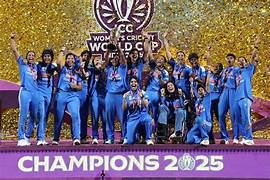
Blog Detail

The 2025 Women’s Cricket World Cup Redefining the Game
Travel Agency
November 8, 2025
The Stage Is Set
The 13th edition of the Women’s Cricket World Cup, held between 30 September and 2 November 2025, brought together eight elite teams battling over 31 matches across India (and matches for one team in Sri Lanka). Wikipedia+2icc+2
From the very start, the tournament wasn’t just about cricket — it became a statement about growth, opportunity and the future of women’s sport.
Records, Reach & Revenue
-
The early part of the tournament reached over 60 million viewers in just the first 13 matches — a five-fold increase over the previous edition. icc+2Business Standard+2
-
The final drew a staggering 185 million users on JioHotstar, equalling major men’s finals in digital reach. Deccan Chronicle
-
Prize money also leapt forward: the winner’s purse stood at USD 4.48 million, with the total tournament fund at USD 13.88 million — surpassing the men’s 2023 World Cup in terms of payout. The Times of India+2The Economic Times+2
This isn’t just about cricket — it’s about commercial validation and visibility for women athletes.
Turning Points & Breakout Moments
-
The clash between India women's cricket team and Pakistan women's national cricket team on 5 October became the most-watched women’s international cricket match ever — 28.4 million viewers, 1.87 billion minutes consumed. icc+1
-
On the field, standouts like Deepti Sharma (22 wickets) and Laura Wolvaardt (571 runs) lit up the tournament with consistently elite performances. Wikipedia+1
-
Legendary Sachin Tendulkar termed this World Cup a “watershed moment” for women’s cricket in India — a shift from sidelines to centre stage. icc
Legacy and What Comes Next
This edition of the World Cup has multiple legacies:
-
It proved that “women’s cricket” can draw mass audiences, deliver high competitiveness, and command premium sponsorship.
-
It raised the stakes for infrastructure, training, professionalism and media coverage in women’s sport.
-
For players and fans in India and beyond, it opened doors — not just for a trophy, but for deeper investment, stronger leagues and higher expectations.
And crucially, it showed that when given the platform, female athletes deliver world-class entertainment, sport and inspiration.